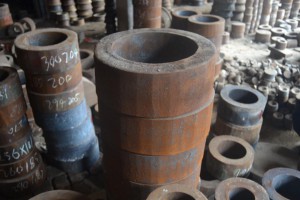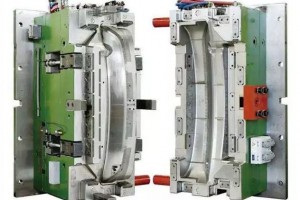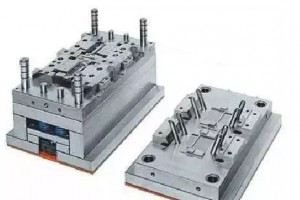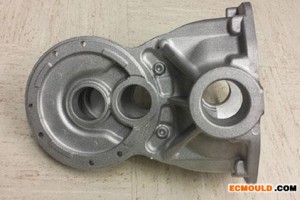
Vertical machines are as adaptable to multimolding as horizontal models, and as easily incorporated into automated cells like this one from Battenfeld for hand-tool maker Belzer.

Many new applications, says Hunold, are driven more by functionality than appearance, and many are strikingly innovative. A new two-component seal for automobile frames has a nylon structural component and a proprietary foaming compound as the second material. But the foaming does not take place in the mold. It occurs when the seal, already in the frame, meets the heat of the frame's dipping bath. The compound foams to fill all voids, thus creating a custom seal without manual or robotic intervention.
The Processing Choices
As we run through the choices for multimolding hardware, keep in mind that we are talking about multishot molding—that is, two or more separate shots. We are thereby omitting such technologies as sandwich molding, where one material is injected behind another through the same nozzle. Derived from the same technology base and also growing in popularity for its ability to create a high-quality surface around a lower-cost core material, it is a close cousin of MM.


For example, take multiple machine systems using two or more single-material IMs. Component A is molded in one IM and transported by robot or manually to a second machine for component B. Pros: can use existing standard IMs and molds. Cons: transport time, intermediate storage, shrinkage of component A, floor space, cost of two IMs and molds vs. one MM system. One large molder running a robot between two machines told us that the change in material A improved the bonding with material B.
Because of the increased interest and activity in multimolding, material choices are expanding. Most machine companies supplying MM systems have a materials compatibility chart (see “Simplifying Multicomponent Design,” March 2004 IMM). However, material suppliers and compounders are steadily working on ways to marry materials that were formerly considered incompatible (see “Plasma Plays Matchmaker,”).
The best idea may be to determine your performance parameters and an optimum material combination; then call the suppliers to see what they recommend. Don't rule out seemingly unworkable combinations without researching them first.
Plasma plays matchmaker
Supported by the German state of Bavaria, New Materials Fürth (NMF) is a technology transfer company doing contract research with the University of Erlangen-Nürnberg. Its aim is to supplement the resources of medium-sized processing companies. Among its various projects, NMF is currently researching inline plasma treatment to improve adhesion of multimolded component materials, including pairs normally considered incompatible.
The project uses a system that consists of a plasma source on an articulated-arm robot and a 125-ton Krauss-Maffei two-component CZ Series injection machine. Following the first shot, an articulated robot positions the plasma source to treat the parts. The beam can be precisely directed to break up adhesion-inhibiting surface layers and create a reactive or active surface that supports a good bond between materials that normally show poor to no compatibility.
Initial results are positive. A number of previously unworkable material combinations have proven viable. Further research and applications development are ongoing.
Web-exclusive sidebar: An investment in multimolding





 浙公网安备: 33028102000314号
浙公网安备: 33028102000314号